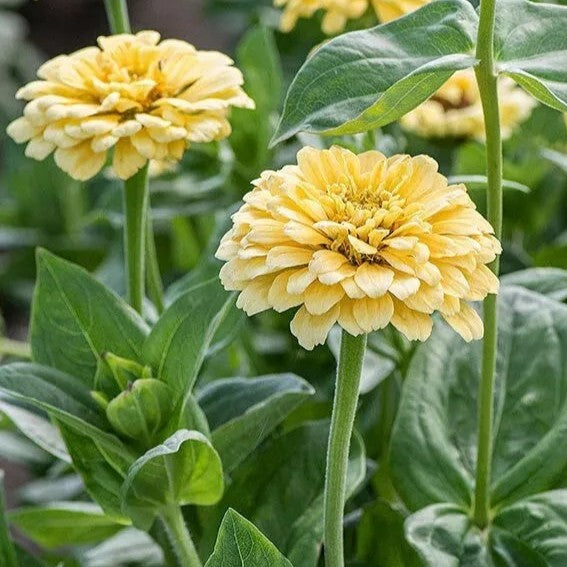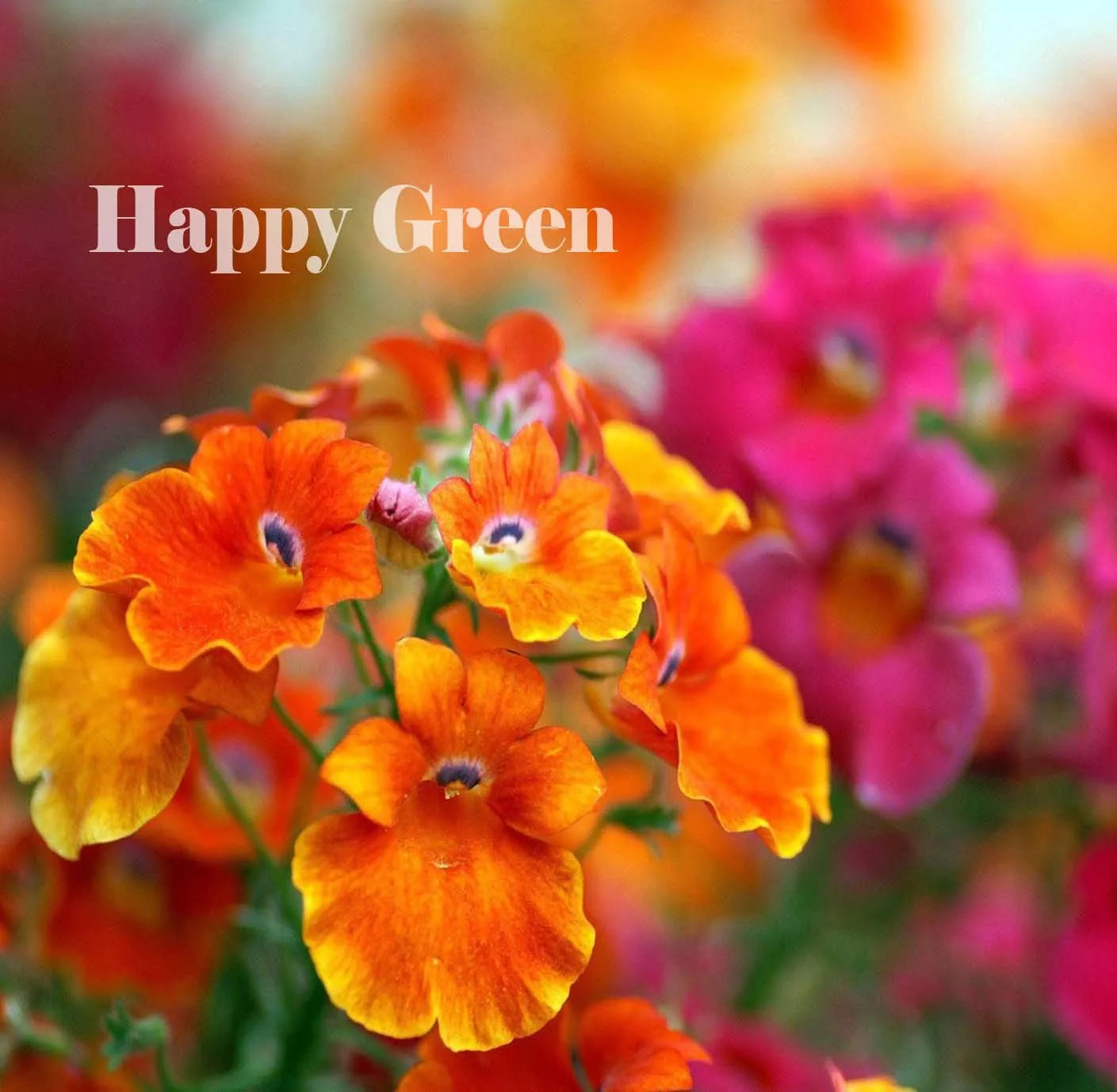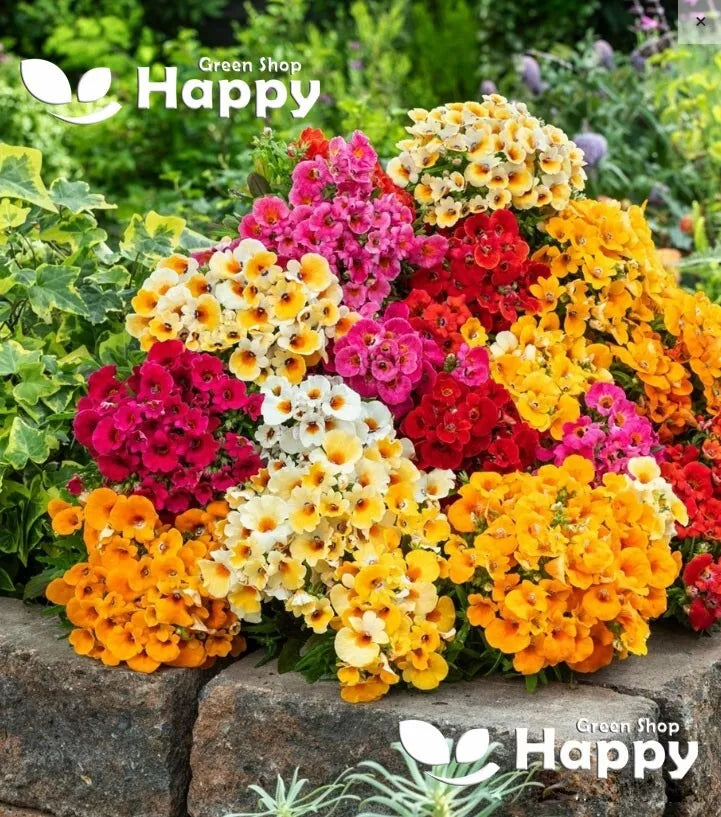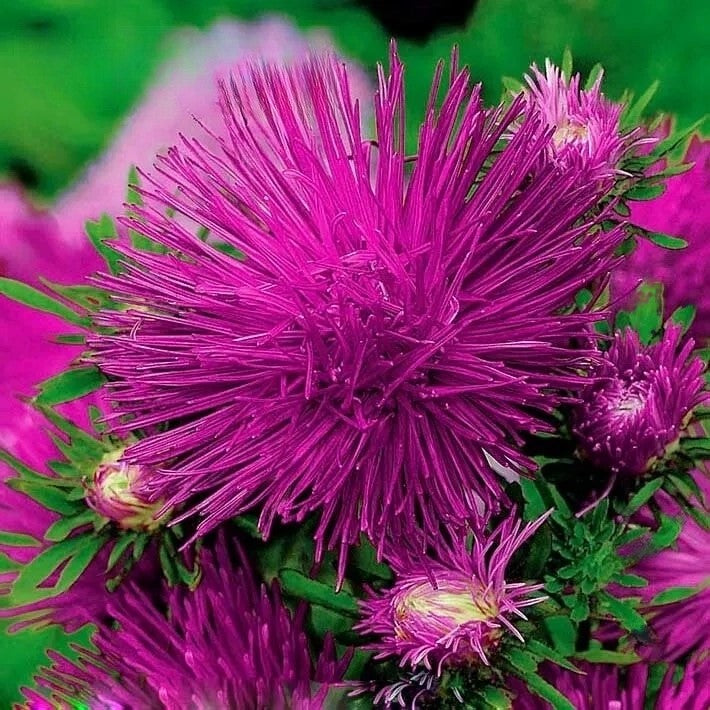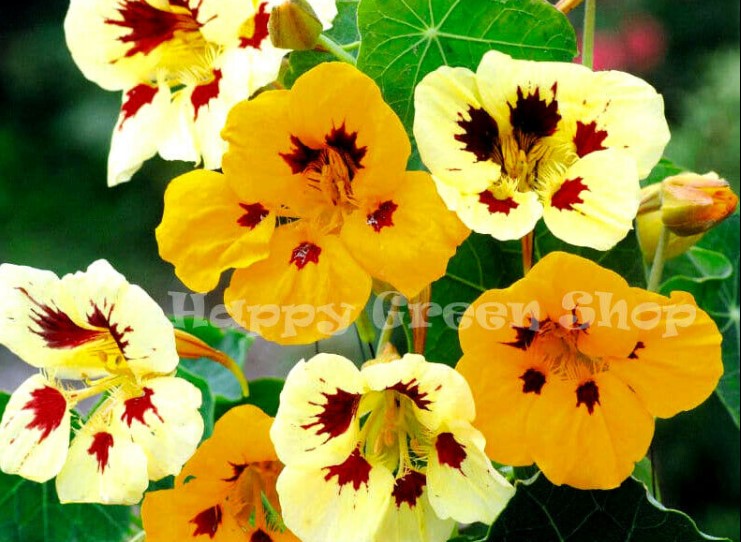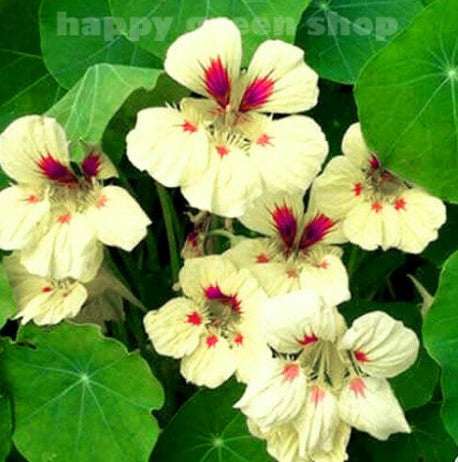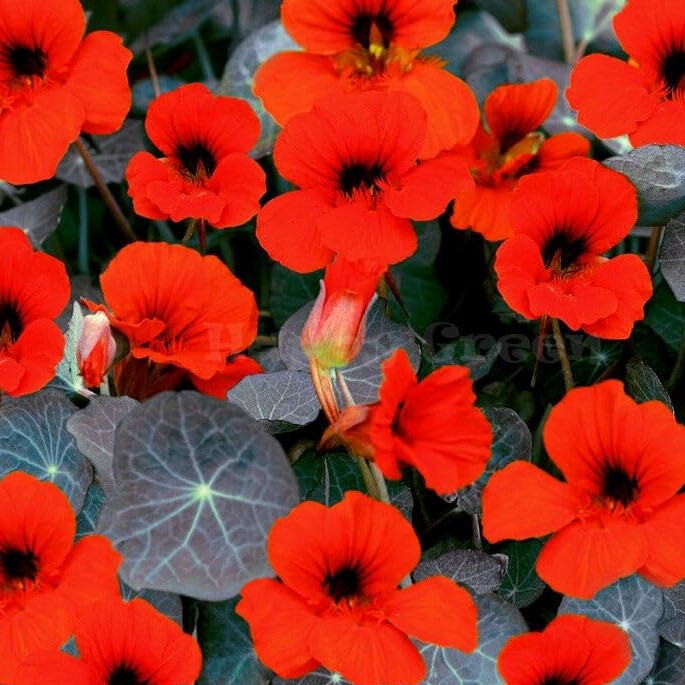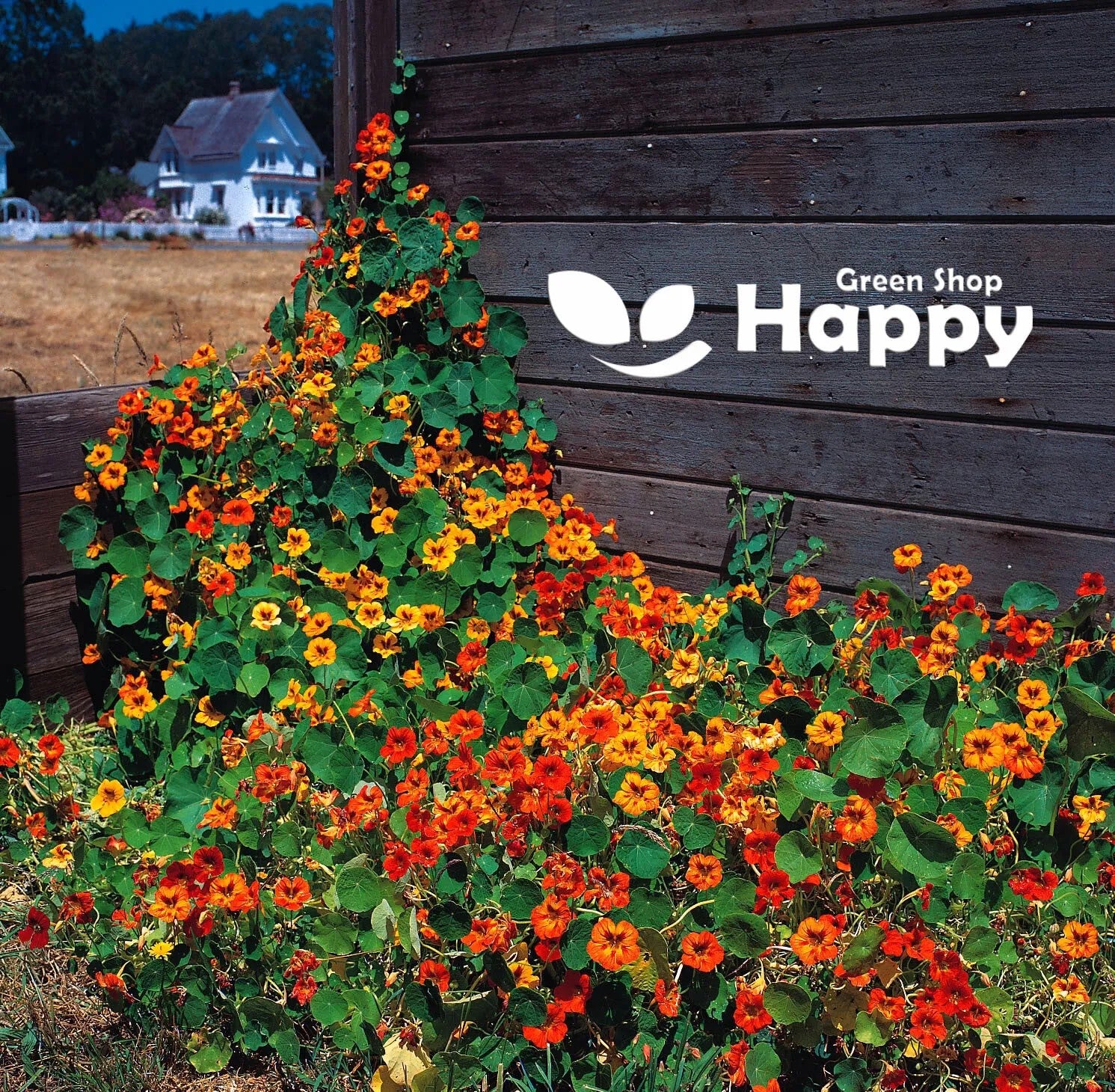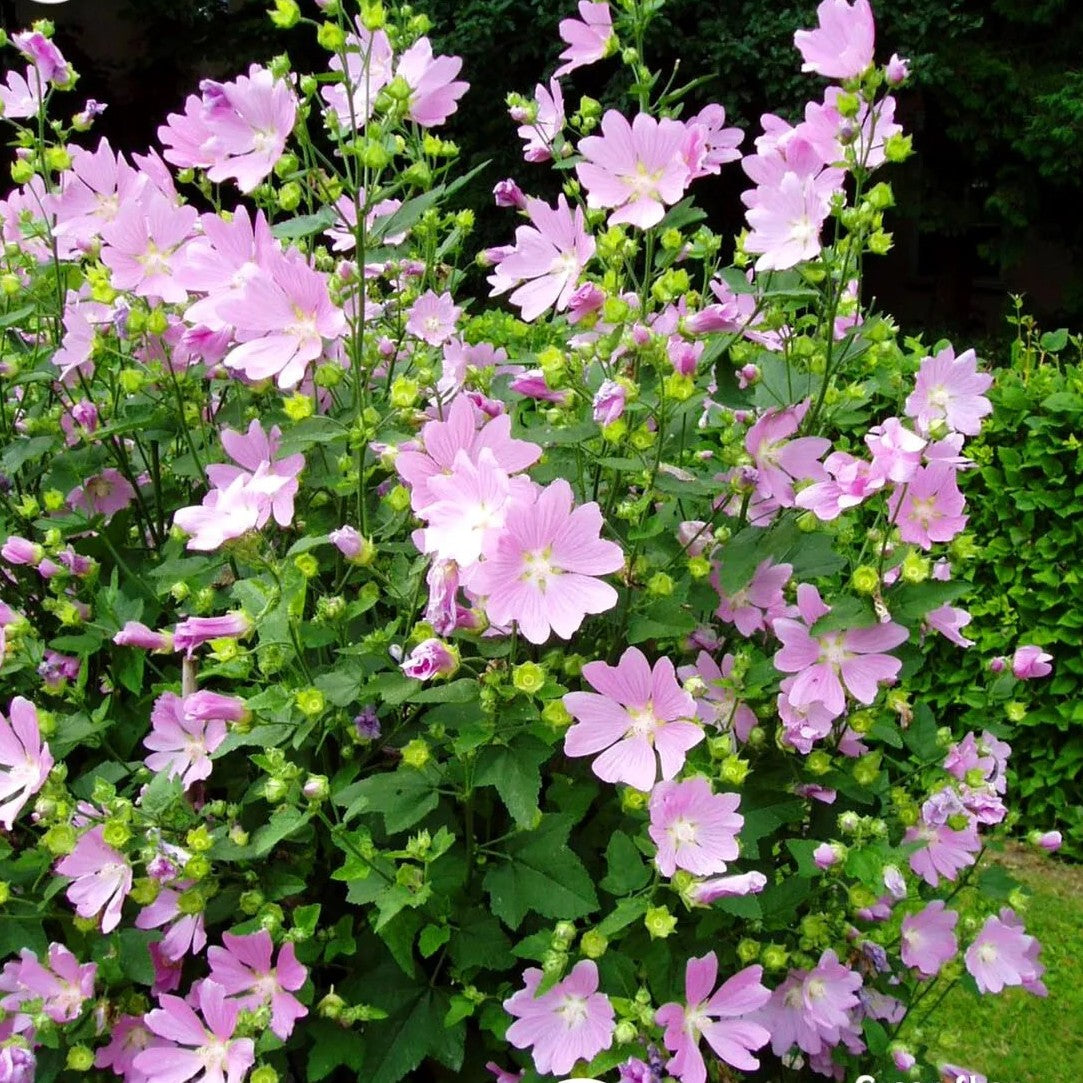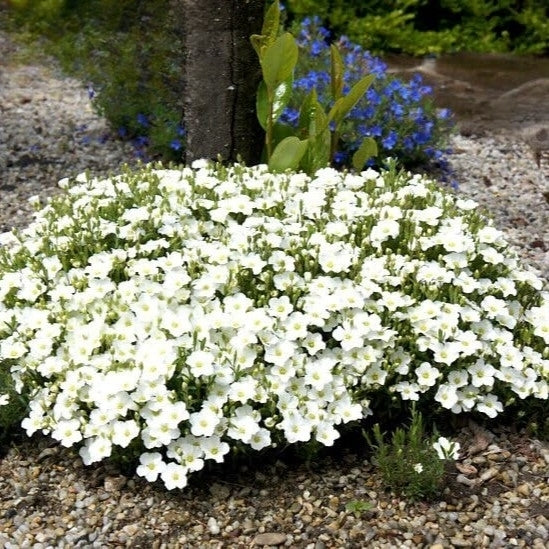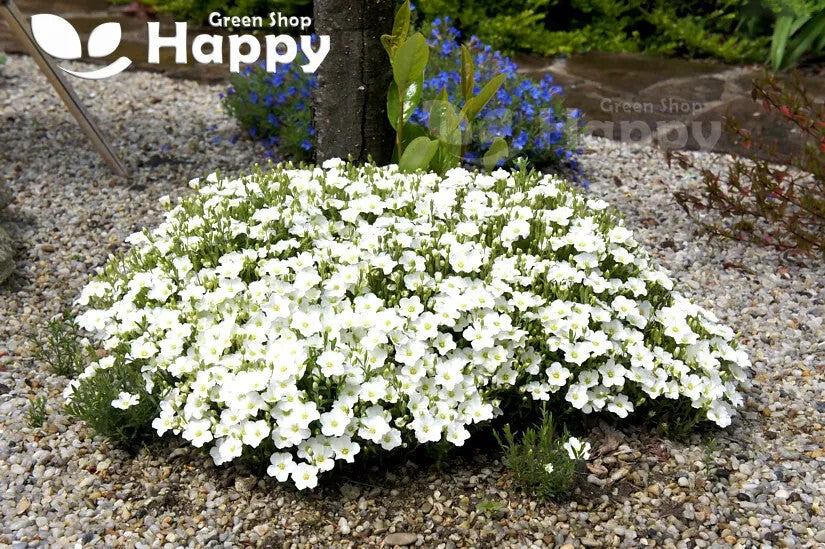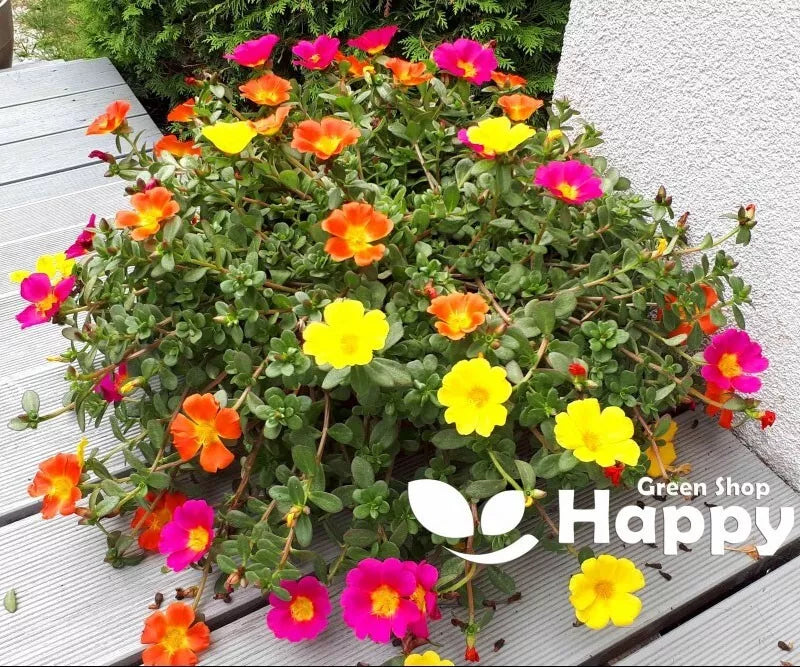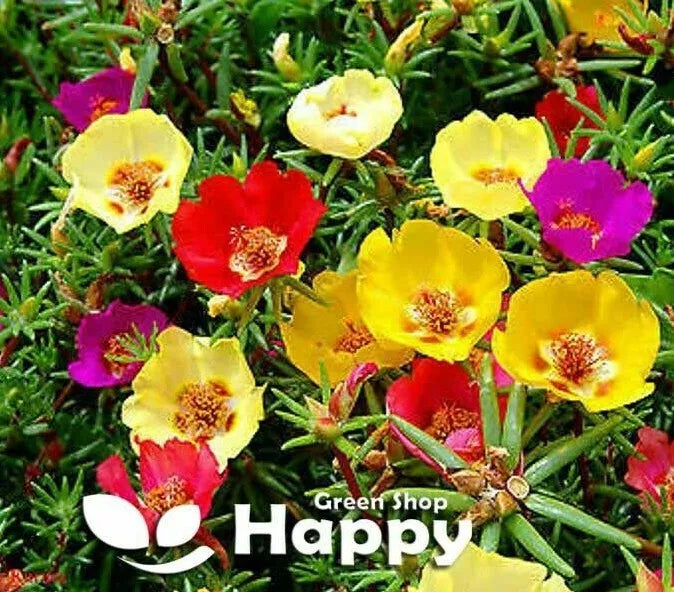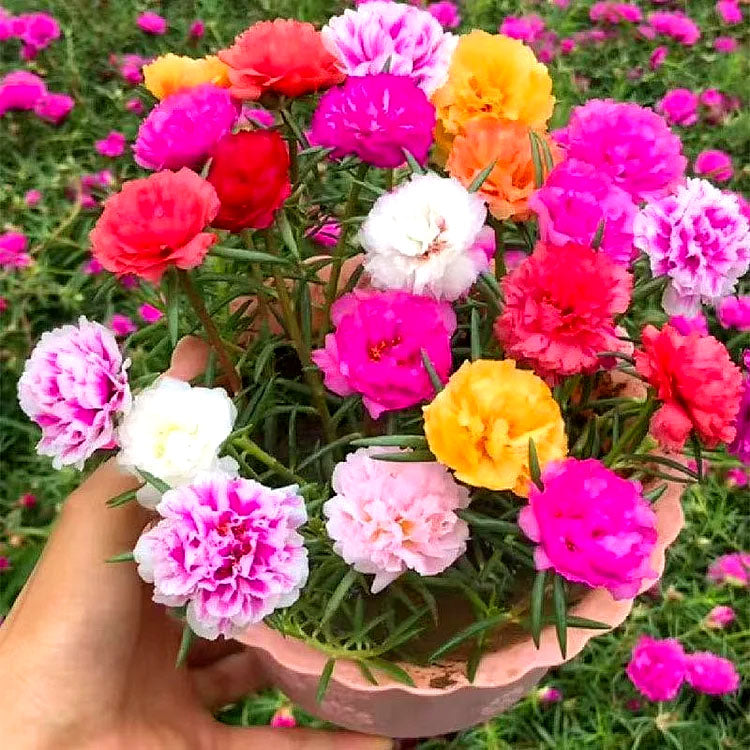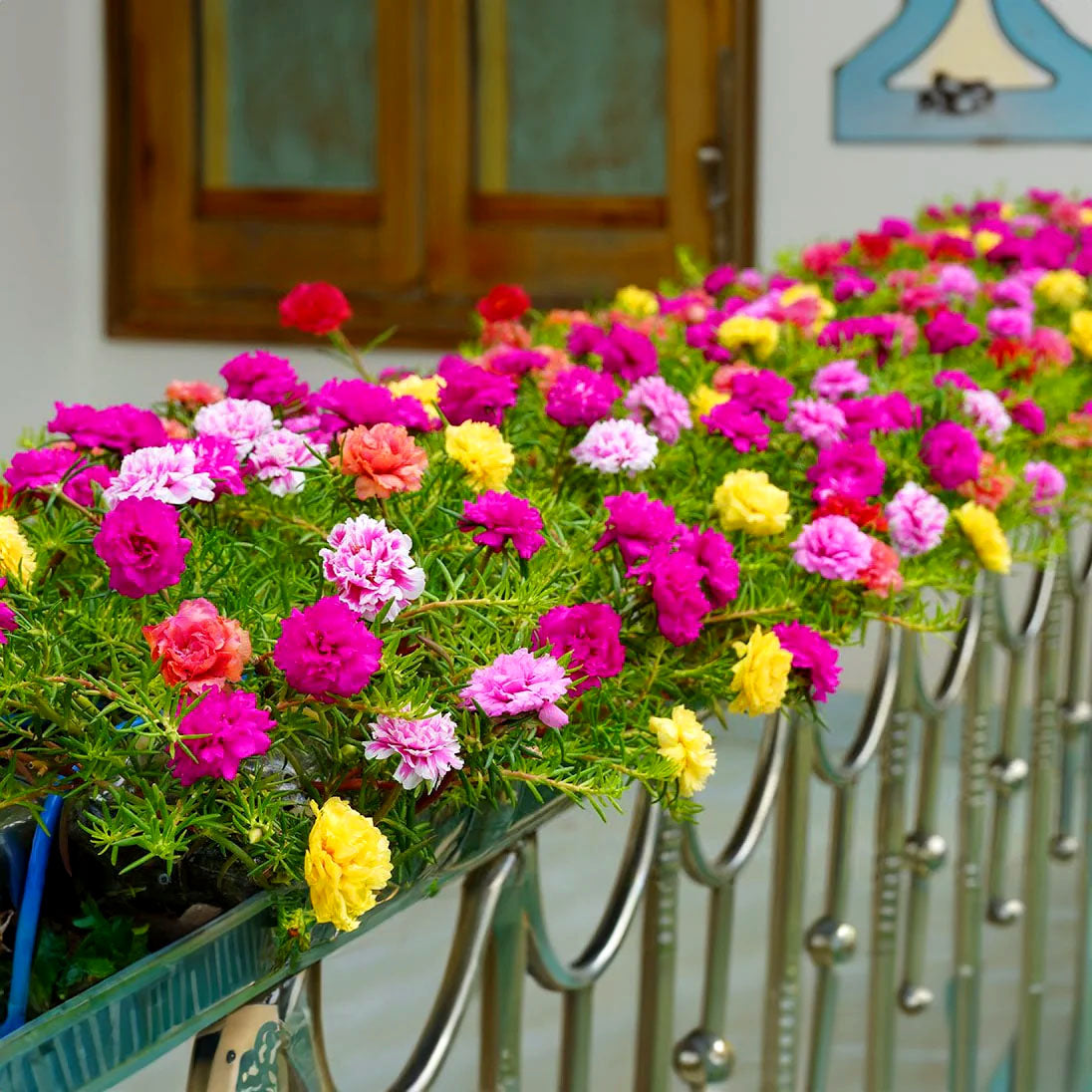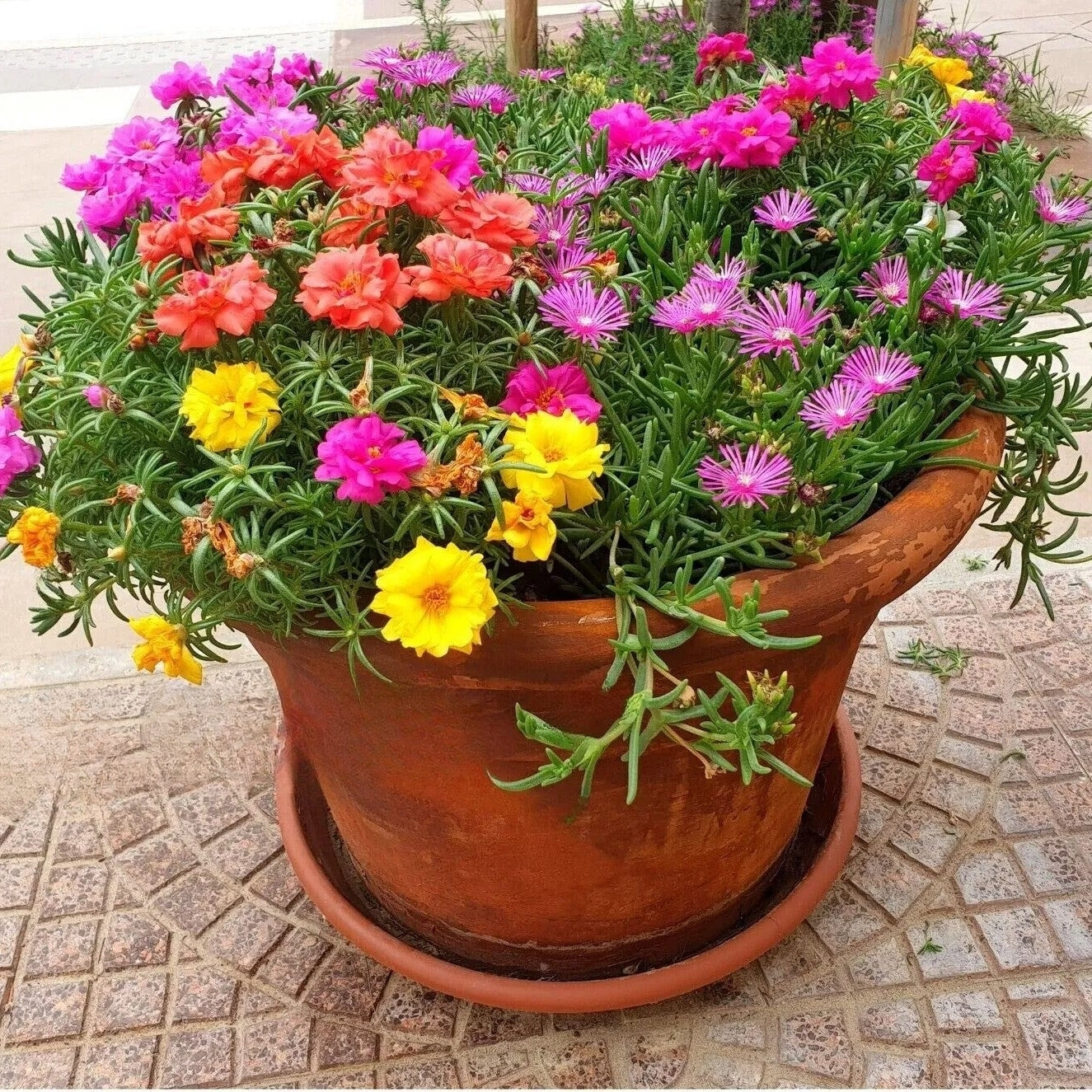Sort by:
287 products
287 products
Nemesia 'Carnival' Mixed – Seeds (Nemesia strumosa)
A compact and free-flowering annual, Nemesia 'Carnival' produces masses of cheerful, brightly colored blooms throughout summer. Its bushy, neat habit makes it ideal for edging, low borders, containers, and window boxes. A reliable choice for continuous seasonal color.
Highlights
-
Richly colored blooms in a vibrant mix
-
Compact, bushy plants for neat displays
-
Long flowering period from early summer
-
Easy to grow annual, suitable for beginners
-
Thrives in beds, borders, and containers
Key Features
-
Botanical Name: Nemesia strumosa
-
Variety: 'Carnival' Mixed
-
Seed Count: Approx. seeds per pack
-
Height/Spread: 20–25 cm tall
-
Position: Full sun, well-drained soil
-
Flowering Period: Summer to early autumn
Perfect For
-
Bedding schemes and cottage gardens
-
Patio pots, containers, and window boxes
-
Low-growing borders and edging
-
Adding vibrant color to garden displays
Sowing Instructions
-
Sow indoors Feb–April at 15–20°C
-
Surface sow seeds; press lightly into soil (do not cover)
-
Germination: 7–14 days
-
Transplant seedlings when large enough to handle, spacing 15–20 cm apart
-
Harden off and plant outdoors after last frost
Needle Aster Purple – 300 Seeds (Callistephus chinensis)
Description:
Bring vibrant purple color and texture to your garden with Needle Aster Purple (Callistephus chinensis). This annual produces tall, sturdy stems adorned with dense, needle-shaped petals in rich purple tones. Perfect for borders, cottage gardens, and cutting gardens, these asters bloom from late summer to autumn and attract pollinators. Easy to grow from seed, they provide long-lasting, eye-catching displays.
Key Features
-
Tall-growing annual with dense needle-shaped purple flowers
-
Long-lasting blooms from late summer to autumn
-
Ideal for cutting and floral arrangements
-
Attracts bees, butterflies, and other pollinators
-
Easy to grow and maintain
Ideal For
-
Borders and mixed flower beds
-
Cottage and cutting gardens
-
Pollinator-friendly plantings
-
Vibrant seasonal color displays
Sowing & Growing
-
Sow Indoors: February–April
-
Transplant Outdoors: May, after frost
-
Germination: 10–14 days at 18–22°C
-
Height: 60–90 cm
-
Spacing: 30–35 cm apart
-
Light: Full sun
-
Soil: Fertile, well-drained
Care Tips
-
Water moderately and consistently
-
Deadhead to prolong flowering
-
Support tall stems if necessary
-
Feed every 2–3 weeks with balanced fertilizer
Nasturtium ‘Lady Bird’ Mix – Seeds (Tropaeolum majus nanum)
The Nasturtium ‘Lady Bird’ Mix is a charming dwarf blend with bright golden-yellow blooms beautifully flecked and spotted with deep red. Compact and free-flowering, this variety is ideal for borders, edging, and containers, while also being edible—both flowers and leaves add color and flavor to summer salads.
Why Grow ‘Lady Bird’ Mix?
-
Unique yellow blooms with striking red markings
-
Compact, bushy habit – perfect for small spaces
-
Long-lasting summer flowers
-
Edible flowers and leaves with a peppery taste
Key Features
-
Type: Half-hardy annual
-
Height: 25–30 cm
-
Flowering: June–October
-
Position: Full sun, poor to average soil
-
Uses: Borders, pots, window boxes, edible gardens
Ideal For
-
Bright edging in garden beds
-
Patio pots and window boxes
-
Edible landscapes and salad garnishes
Sowing & Growing
-
Sow indoors: March–April in pots or trays
-
Sow outdoors: April–June directly in soil
-
Germination: 10–14 days at 15–20°C
-
Space plants 20–25 cm apart
-
Prefers poor soil for best flowering
Nasturtium ‘Empress of India’ – Seeds (Tropaeolum nanum)
Nasturtium ‘Empress of India’ (Tropaeolum nanum) is a vibrant annual with striking deep red and dark foliage. Its trailing habit makes it perfect for containers, hanging baskets, and garden borders. Edible flowers and leaves add a peppery flavor to salads and garnishes, while the plant attracts pollinators, creating both beauty and utility in your garden.
Why Grow "Empress of India"
-
Deep red blooms with dark, attractive foliage
-
Trailing habit ideal for containers and hanging baskets
-
Edible flowers and leaves with a peppery taste
-
Attracts bees, butterflies, and other pollinators
Key Features
-
Type: Annual (Tropaeolum nanum)
-
Height: 20–30 cm
-
Flowering: June–September
-
Position: Full sun to partial shade
-
Uses: Containers, hanging baskets, borders, edible garden
Ideal For
-
Edible and ornamental garden planting
-
Hanging baskets and container displays
-
Pollinator-friendly gardens
-
Borders and small garden beds
Sowing & Growing
-
Sow indoors: March–April in trays or pots
-
Sow outdoors: After last frost in prepared soil
-
Germination: 7–14 days at 18–22°C
-
Thin seedlings to 20–25 cm apart
-
Prefers well-drained soil and sunny positions
-
Deadhead to encourage continuous flowering
Nasturtium 'Double Gleam Hybrids' Mix – 80 Seeds (Tropaeolum majus)
Fill your garden with vibrant color using Nasturtium 'Double Gleam Hybrids' Mix. This stunning variety produces semi-double blooms in shades of yellow, orange, and red above trailing, rounded foliage. Perfect for borders, hanging baskets, and containers, nasturtiums are also edible, adding color and spice to salads.
Why Grow 'Double Gleam Hybrids'
-
Semi-double, glowing flowers in warm tones
-
Long-lasting summer blooms
-
Attracts pollinators and beneficial insects
-
Edible flowers and leaves
Key Features
-
Type: Hardy annual (Tropaeolum majus)
-
Height: 30–40 cm, trailing
-
Flowering: June–September
-
Position: Full sun or partial shade
-
Uses: Borders, baskets, containers, edible flowers
Ideal For
-
Hanging baskets and window boxes
-
Bright summer bedding
-
Edible gardens and kitchen plots
-
Companion planting to deter pests
Sowing & Growing
-
Sow indoors: March–April in pots
-
Sow outdoors: April–June directly in soil
-
Germination: 7–14 days at 15–20°C
-
Plant spacing: 25–30 cm
-
Prefers poor to moderately fertile soil for best flowering
Musk Mallow – Seeds (Malva moschata)
Musk Mallow (Malva moschata) is a charming perennial known for its delicate, saucer-shaped flowers in shades of soft pink or white. Blooming from early summer to autumn, it adds natural cottage garden charm to borders, meadows, and wildflower plantings. Hardy and low-maintenance, this mallow thrives in well-drained soil and attracts bees, butterflies, and other pollinators, making it both ornamental and ecologically beneficial.
Why Grow "Musk Mallow"
-
Delicate pink or white saucer-shaped blooms
-
Long flowering season from early summer to autumn
-
Hardy, low-maintenance, and resilient
-
Pollinator-friendly plant
Key Features
-
Type: Perennial (Malva moschata)
-
Height: 60–90 cm
-
Flowering: Early summer to autumn
-
Position: Full sun or partial shade
-
Uses: Borders, meadows, cottage gardens, wildlife gardens
Ideal For
-
Naturalistic and cottage-style planting
-
Pollinator-friendly gardens
-
Borders, meadows, and wildflower plantings
-
Low-maintenance perennial displays
Sowing & Growing
-
Sow indoors: February–April in trays or pots
-
Sow outdoors: April–June directly in soil
-
Germination: 14–21 days at 15–20°C
-
Space seedlings: 30–40 cm apart
-
Prefers well-drained soil in full sun or partial shade
Mountain Daisy White – Seeds (Arenaria montana white)
A charming alpine perennial, Mountain Daisy White forms neat, low cushions covered in masses of pure white blooms. Perfect for rock gardens, edging, and containers, it adds a fresh touch of brightness while being hardy and easy to maintain.
Why Grow Mountain Daisy White
-
Profusion of brilliant white flowers in late spring to summer
-
Compact, spreading habit ideal for ground cover
-
Low-maintenance and drought-tolerant once established
-
Long-lived alpine beauty
Key Features
-
Type: Perennial
-
Height: 15–20 cm
-
Flowering: May–July
-
Position: Full sun, well-drained soil
-
Uses: Rock gardens, borders, edging, containers
Ideal For
-
Rockeries & alpine gardens
-
Ground cover planting
-
Container displays
-
Bright edging for paths or borders
Sowing & Growing
-
Sow indoors: February–April in trays with light cover
-
Germination: 14–21 days at 18–20°C
-
Transplant when seedlings are large enough to handle
-
Plant out after last frost, spacing 20 cm apart
-
Prefers sunny, well-drained sites
Moss Rose Single – Seeds (Portulaca grandiflora)
The Moss Rose Single is a low-growing, sun-loving annual with bright, silky flowers in vivid shades of pink, red, yellow, orange, and white. With its succulent foliage and drought tolerance, it thrives in poor soils and hot conditions, making it perfect for rock gardens, containers, and ground cover.
What Makes It Special
-
Brilliantly colored single blooms with a silky texture
-
Excellent tolerance to heat and drought
-
Low-maintenance, thrives in poor soil conditions
-
Perfect choice for hot, sunny garden spots
Key Features
-
Botanical name: Portulaca grandiflora
-
Variety: Moss Rose Single
-
Seed count: Approx. seeds per pack
-
Height/Spread: 10–15 cm tall, spreading to 30 cm
-
Position: Full sun; sandy or well-drained soil
-
Flowering period: Summer to early autumn
Ideal For
-
Rock gardens
-
Hanging baskets and containers
-
Edging along borders
-
Ground cover in hot, dry areas
Sowing Instructions
-
When to sow: March–May indoors or April–June outdoors after frost
-
How to sow:
-
Scatter seeds on the soil surface (light aids germination)
-
Press gently, do not cover deeply
-
Germination: 10–14 days
-
-
After germination:
-
Thin seedlings to 15–20 cm apart
-
Water sparingly—plants prefer dry conditions
-
Moss Rose Longbloom Double Mix – 2,000 Seeds (Portulaca grandiflora)
Moss Rose Longbloom Double Mix (Portulaca grandiflora) is a vibrant annual producing abundant double blooms in a rainbow of colors, including pink, red, yellow, orange, and white. Its low-growing, spreading habit makes it ideal for rockeries, borders, containers, and sunny garden beds. Fast-growing, drought-tolerant, and long-flowering, it attracts pollinators while adding continuous summer color.
Why Grow "Longbloom Double Mix"
-
Profusion of double blooms in bright mixed colors
-
Low-growing, spreading habit ideal for ground cover
-
Long flowering period from summer to autumn
-
Drought-tolerant and easy to maintain
-
Attracts bees, butterflies, and other pollinators
Key Features
-
Type: Annual (Portulaca grandiflora)
-
Height: 10–20 cm
-
Flowering: June–September
-
Position: Full sun
-
Uses: Rockeries, borders, containers, ground cover, pollinator-friendly gardens
Ideal For
-
Sunny borders and garden beds
-
Rockeries and container planting
-
Pollinator-friendly gardens
-
Low-maintenance, drought-tolerant planting
Sowing & Growing
-
Sow indoors: March–April in seed trays or pots
-
Sow outdoors: After last frost in prepared soil
-
Germination: 7–14 days at 18–22°C
-
Thin seedlings to 15–20 cm apart
-
Prefers full sun and well-drained soil
-
Deadhead occasionally to prolong flowering
Showing 135/287




